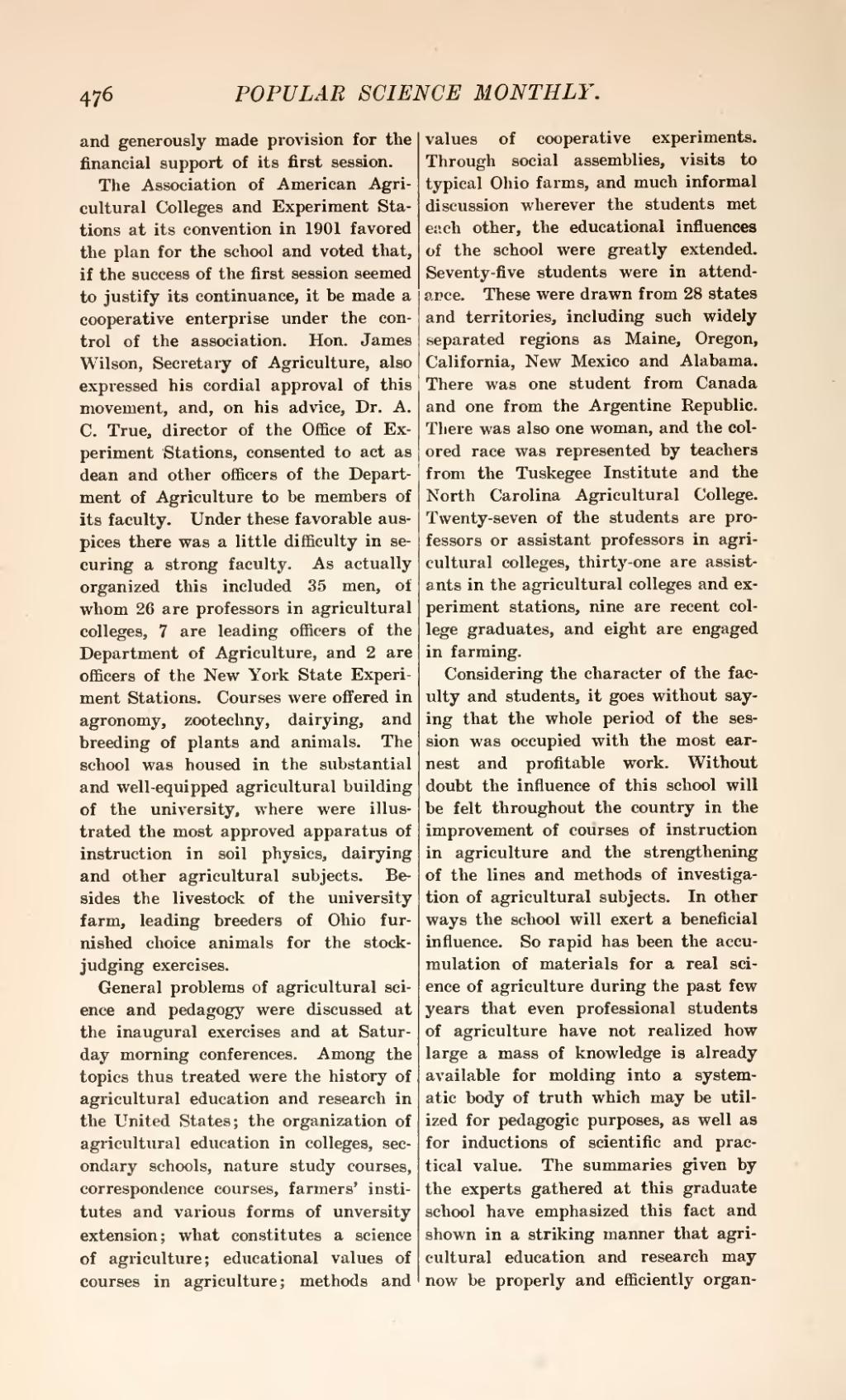and generously made provision for the financial support of its first session.
The Association of American Agricultural Colleges and Experiment Stations at its convention in 1901 favored the plan for the school and voted that, if the success of the first session seemed to justify its continuance, it be made a cooperative enterprise under the control of the association. Hon. James Wilson, Secretary of Agriculture, also expressed his cordial approval of this movement, and, on his advice, Dr. A. C. True, director of the Office of Experiment Stations, consented to act as dean and other officers of the Department of Agriculture to be members of its faculty. Under these favorable auspices there was a little difficulty in securing a strong faculty. As actually organized this included 35 men, of whom 26 are professors in agricultural colleges, 7 are leading officers of the Department of Agriculture, and 2 are officers of the New York State Experiment Stations. Courses were offered in agronomy, zootechny, dairying, and breeding of plants and animals. The school was housed in the substantial and well-equipped agricultural building of the university, where were illustrated the most approved apparatus of instruction in soil physics, dairying and other agricultural subjects. Besides the livestock of the university farm, leading breeders of Ohio furnished choice animals for the stock-judging exercises.
General problems of agricultural science and pedagogy were discussed at the inaugural exercises and at Saturday morning conferences. Among the topics thus treated were the history of agricultural education and research in the United States; the organization of agricultural education in colleges, secondary schools, nature study courses, correspondence courses, farmers' institutes and various forms of unversity extension; what constitutes a science of agriculture; educational values of courses in agriculture; methods and values of cooperative experiments. Through social assemblies, visits to typical Ohio farms, and much informal discussion wherever the students met each other, the educational influences of the school were greatly extended. Seventy-five students were in attendance. These were drawn from 28 states and territories, including such widely separated regions as Maine, Oregon, California, New Mexico and Alabama. There was one student from Canada and one from the Argentine Republic. There was also one woman, and the colored race was represented by teachers from the Tuskegee Institute and the North Carolina Agricultural College. Twenty-seven of the students are professors or assistant professors in agricultural colleges, thirty-one are assistants in the agricultural colleges and experiment stations, nine are recent college graduates, and eight are engaged in farming.
Considering the character of the faculty and students, it goes without saying that the whole period of the session was occupied with the most earnest and profitable work. Without doubt the influence of this school will be felt throughout the country in the improvement of courses of instruction in agriculture and the strengthening of the lines and methods of investigation of agricultural subjects. In other ways the school will exert a beneficial influence. So rapid has been the accumulation of materials for a real science of agriculture during the past few years that even professional students of agriculture have not realized how large a mass of knowledge is already available for molding into a systematic body of truth which may be utilized for pedagogic purposes, as well as for inductions of scientific and practical value. The summaries given by the experts gathered at this graduate school have emphasized this fact and shown in a striking manner that agricultural education and research may now be properly and efficiently organ-
